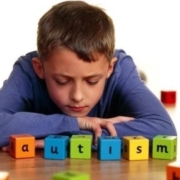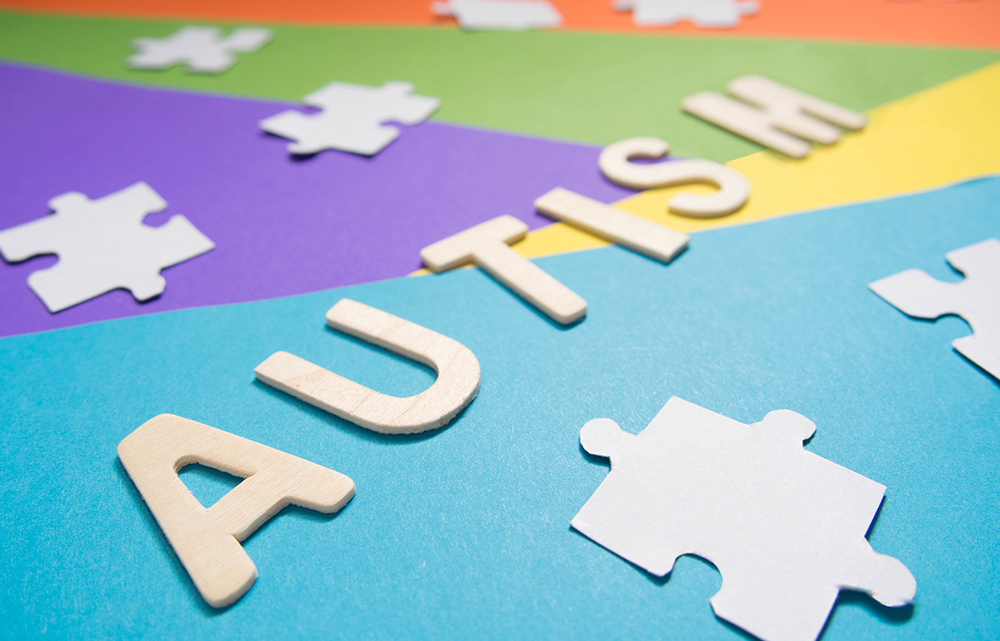How to teach your child with autism to wait
Parents often ask how to teach their child with autism to wait, as waiting is a part of everyday life. Waiting in lines, for food, or at stop lights is natural. However, waiting can be difficult for the average child, who may feel like waiting equals not getting what they want. For a child with autism, waiting can be even more challenging as they may struggle with understanding what it means to wait and how long it may take. However, there are a few ways to teach a child with autism how to wait, these are:
- Practicing Waiting
- Visuals
- Social Stories
- Distinguish between waiting and unavailable

How do you practice the skill of waiting?
One of the first things in teaching your child with autism to wait is to practice waiting. Being able to practice waiting in low-stakes situations can help a child build up the stamina for waiting. Do not let a child’s first experience be out in public or in an unfamiliar place as they will need to process their emotions when it comes to waiting and it can be a stressful situation for everyone. Practice waiting at home so a child with autism can have a safe space to process the frustration or anger that can come with the activity of waiting. When they ask for their favorite treat, ask them to wait for two minutes the first time and explain why we have to wait. Continue to build up the time to practice them waiting and increase their stamina for waiting.
Also, it is important to create a trusting and safe environment for your child with autism as this can help with waiting. Make sure to reward them for their patience and explain the consequences when they do not wait. Give them choices between two activities or items that can help them understand why one has to wait, such as allowing them to choose which toy they get first and the other one after they’ve waited.
Wait Visuals for autism
Visual aids can be helpful for children with autism to learn and process new tasks. These aids may include timers or wait symbols to indicate waiting periods. The timer helps the child understand that the wait will end and they will receive what they want. If there are other children present, a wait sign acknowledges the child with autism’s needs and communicates that attention will be given as soon as possible. This reassures the child that they have not been forgotten.
It’s also important to remember that for a child with autism, it might take longer for them to process the instructions of having to wait. So, it’s best to give them enough time and repeated reminders if necessary. The goal is to teach your child the ability to pause and think before responding rather than impulsively reacting.
You can practice this by:
- role-playing scenarios with them
- using visual cues
- rewards
When teaching your child with autism to wait, it’s important to remain consistent, patient, and understanding. It can be helpful to provide visual cues like a timer or picture that shows how long the wait time is going to be.
Use verbal reminders:
- Count down from 10
- Repeat instructions in smaller chunks
Additionally, positive reinforcement such as praising your child and offering rewards for successful waiting can help encourage desired behavior. For example, if your child is able to wait a certain amount of time before asking for something, you can reward them with extra playtime or a special treat. It’s also important to stay calm and provide positive reinforcement during times when the waiting process gets difficult. Being consistent, understanding, and reinforcing good behavior teaches your child with autism to wait can be difficult, but the end result is a reward that they desire.
Wait Social Stories for autism
Social stories are a way to teach children with autism to wait. They use visuals and characters to depict real-life experiences. For instance, waiting in the grocery store can be addressed with a social story. The story can feature a child with the same name as the real-life child waiting in line for check out at a specific grocery store, even including the name of a cashier.
A good social story would include:
- The who
- The what
- The where
- The why
- Should be written in a positive manner (what should happen instead of what not to do)
- Include real-life feelings the child could face in that situation
The story should be written in the first person and should include visuals of the child waiting in line, interacting with the cashier, and getting their food. It can also include a few sentences about how long it took for the checkout process to finish. The social story should end with a positive outcome that reinforces to the child that waiting is an important skill to have and something they can do.
Distinguish between “wait” and “unavailable”
When teaching your child with autism to wait, it is important to help them distinguish between “wait” and “unavailable.” Waiting can be a difficult concept for someone with autism to understand, but it is essential for their development. To make the distinction clear, explain that waiting means that something will happen soon and that they should remain patient until it does, whereas unavailable means that it won’t happen at all or not for a long time.
Unavailable:
For example, let’s say your child wants cereal for breakfast but you are out of their favorite cereal. You would not want to teach the wait skill here because they are not going to be getting their cereal. Therefore you must show them that unfortunately, they are going to have to pick something else because their cereal is currently not available in the house. You can do this by showing an empty container to show that the cereal is all gone.
Waiting:
Teaching the skill of waiting only works when there is something for the child to receive at the end of the waiting whether tangible or not. This could be the item they wanted to eat or buy or going to the park or leaving the grocery store for home.
Teaching the skill of waiting can be very beneficial to everyone involved. It can prevent meltdowns and undesirable behavior from occurring. Additionally, waiting is a skill that everyone has to learn and put to use in everyday life. Similarly, to their peers, children with autism can struggle at first with the skill of waiting. Therefore, teaching a child with autism to wait through practice, visuals, and social stories can improve their waiting endurance.
The Leafwing Center offers services to teach children the skill of waiting, which can be reinforced at home. Two common difficulties that we encounter when working with families over the years are regarding waiting and when a child is told no. These two scenarios can be overwhelming as they are often accompanied by the most intense challenging behaviors. ABA therapists will create personalized plans based on the child’s ability level and are trained to address the behavior that comes with teaching the skill of waiting.
Other Related Article
Frequently asked questions about ABA therapy
What is ABA Therapy used for?
ABA-based therapy can be used in a multitude of areas. Currently, these interventions are used primarily with individuals living with ASD; however, their applications can be used with individuals living with pervasive developmental disorders as well as other disorders. For ASD, it can be used in effectively teaching specific skills that may not be in a child’s repertoire of skills to help him/her function better in their environment whether that be at home, school, or out in the community. In conjunction with skill acquisition programs, ABA-based interventions can also be used in addressing behavioral excesses (e.g., tantrum behaviors, aggressive behaviors, self-injurious behaviors). Lastly, it can also be utilized in parent/caregiver training.
In skill acquisition programs, a child’s repertoire of skills is assessed in the beginning phase of the services in key adaptive areas such as communication/language, self-help, social skills, and motor skills as well. Once skills to be taught are identified, a goal for each skill is developed and then addressed/taught by using ABA-based techniques to teach those important skills. Ultimately, an ABA-based therapy will facilitate a degree of maintenance (i.e., the child can still perform the learned behaviors in the absence of training/intervention over time) and generalization (i.e., the learned behaviors are observed to occur in situations different from the instructional setting). These two concepts are very important in any ABA-based intervention.
In behavior management, the challenging behaviors are assessed for their function in the beginning phase of the services. In this phase, the “why does this behavior happen in the first place?” is determined. Once known, an ABA-based therapy will be developed to not just decrease the occurrence of the behavior being addressed, but also teach the child a functionally-equivalent behavior that is socially-appropriate. For example, if a child resorts to tantrum behaviors when she is told she cannot have a specific item, she may be taught to accept an alternative or find an alternative for herself. Of course, we can only do this up to a certain point—the offering of alternatives. There comes a point when a ‘no’ means ‘no’ so the tantrum behavior will be left to run its course (i.e., to continue until it ceases). This is never easy and will take some time for parents/caregivers to get used to, but research has shown that over time and consistent application of an ABA-based behavior management program, the challenging behavior will get better.
In parent training, individuals that provide care for a child may receive customized “curriculum” that best fit their situation. A typical area covered in parent training is teaching responsible adults pertinent ABA-based concepts to help adults understand the rationale behind interventions that are being used in their child’s ABA-based services. Another area covered in parent training is teaching adults specific skill acquisition programs and/or behavior management programs that they will implement during family time. Other areas covered in parent training may be data collection, how to facilitate maintenance, how to facilitate generalization of learned skills to name a few.
There is no “one format” that will fit all children and their families’ needs. The ABA professionals you’re currently working with, with your participation, will develop an ABA-based treatment package that will best fit your child’s and your family’s needs. For more information regarding this topic, we encourage you to speak with your BCBA or reach out to us at info@leafwingcenter.org.
Who Can Benefit From ABA Therapy?
There is a common misconception that the principles of ABA are specific to Autism. This is not the case. The principles and methods of ABA are scientifically backed and can be applied to any individual. With that said, the U.S. Surgeon General and the American Psychological Association consider ABA to be an evidence based practice. Forty years of extensive literature have documented ABA therapy as an effective and successful practice to reduce problem behavior and increase skills for individuals with intellectual disabilities and Autism Spectrum Disorders (ASD). Children, teenagers, and adults with ASD can benefit from ABA therapy. Especially when started early, ABA therapy can benefit individuals by targeting challenging behaviors, attention skills, play skills, communication, motor, social, and other skills. Individuals with other developmental challenges such as ADHD or intellectual disability can benefit from ABA therapy as well. While early intervention has been demonstrated to lead to more significant treatment outcomes, there is no specific age at which ABA therapy ceases to be helpful.
Additionally, parents and caregivers of individuals living with ASD can also benefit from the principles of ABA. Depending on the needs of your loved one, the use of specified ABA techniques in addition to 1:1 services, may help produce more desirable treatment outcomes. The term “caregiver training” is common in ABA services and refers to the individualized instruction that a BCBA or ABA Supervisor provides to parents and caregivers. This typically involves a combination of individualized ABA techniques and methods parents and caregivers can use outside of 1:1 sessions to facilitate ongoing progress in specified areas.
ABA therapy can help people living with ASD, intellectual disability, and other developmental challenges achieve their goals and live higher quality lives.
What does ABA Therapy look like?
Agencies that provide ABA-based services in the home-setting are more likely to implement ABA services similarly than doing the same exact protocols or procedures. Regardless, an ABA agency under the guidance of a Board-Certified Behavior Analyst follows the same research-based theories to guide treatment that all other acceptable ABA agencies use.
ABA-based services start with a functional behavior assessment (FBA). In a nutshell, a FBA assesses why the behaviors may be happening in the first place. From there, the FBA will also determine the best way to address the difficulties using tactics that have been proven effective over time with a focus on behavioral replacement versus simple elimination of a problem behavior. The FBA will also have recommendations for other relevant skills/behaviors to be taught and parent skills that can be taught in a parent training format to name a few. From there, the intensity of the ABA-based services is determined, again, based on the clinical needs of your child. The completed FBA is then submitted to the funding source for approval.
One-on-one sessions between a behavior technician and your child will start once services are approved. The duration per session and the frequency of these sessions per week/month will all depend on how many hours your child’s ABA services have been approved for—usually, this will be the number recommended in the FBA. The sessions are used to teach identified skills/behaviors via effective teaching procedures. Another aspect of ABA-based services in the home-setting is parent training. Parent training can take many forms depending on what goals have been established during the FBA process. The number of hours dedicated for parent training is also variable and solely depends on the clinical need for it. If a 1:1 session is between a behavior technician and your child, a parent training session or appointment is between you and the case supervisor and with and without your child present, depending on the parent goal(s) identified. Parent training service’s goal is for you to be able to have ample skills/knowledge in order for you to become more effective in addressing behavioral difficulties as they occur outside of scheduled ABA sessions. Depending on the goals established, you may be required to participate in your child’s 1:1 sessions. These participations are a good way for you to practice what you have learned from the case supervisor while at the same time, having the behavior technician available to you to give you feedback as you practice on those new skills.
As mentioned in the beginning, no two ABA agencies will do the same exact thing when it comes to providing ABA services; however, good agencies will always base their practice on the same empirically-proven procedures.
How do I start ABA Therapy?
In most cases, the first item required to start ABA therapy is the individual’s autism spectrum disorder (ASD) diagnosis report. This is typically conducted by a doctor such as a psychiatrist, psychologist, or a developmental pediatrician. Most ABA therapy agencies and insurance companies will ask for a copy of this diagnosis report during the intake process as it is required to request an ABA assessment authorization from the individual’s medical insurance provider.
The second item required to start ABA therapy is a funding source. In the United States, and in cases where Medi-Cal or Medicare insurances are involved, there is a legal requirement for ABA services to be covered when there is a medical necessity (ASD diagnosis). Medi-Cal and Medicare cover all medically necessary behavioral health treatment services for beneficiaries. This typically includes children diagnosed with ASD. Since Applied Behavior Analysis is an evidence based and effective treatment for individuals with ASD, it is considered a covered treatment when medically necessary. In many cases, private insurance will also cover ABA services when medically necessary, however in these cases, it is best to speak directly with your medical insurance provider to determine the specifics of the coverage and to ensure that ABA is in fact, a covered benefit. Additionally, some families opt to pay for ABA services out-of-pocket.
The next step to starting ABA therapy is to contact an ABA provider whom you are interested in working with. Depending on your geographic location, ABA agencies exist in many cities across the United States. Your insurance carrier, local support groups, and even a thorough online search can help you find reputable and properly credentialed ABA agencies near you. Our organization, LeafWing Center, is based in southern California and is recognized for aiding people with ASD achieve their goals with the research based on applied behavior analysis.
Once you have identified the ABA provider with whom you wish to work, they should help you facilitate the next steps. These will include facilitating paperwork and authorizations with your funding source. Once the assessment process begins, a BCBA (Board Certified Behavior Analyst) or qualified Program Supervisor should get in contact with you to arrange times in which interviews with parents/caregivers and observations of your loved one can be conducted. This will help in the process of gathering important clinical information so that with your collaboration, the most effective treatment plans and goals can be established for your loved one. This process is referred to as the Functional Behavior Assessment (FBA) and is elaborated on in different blog posts on our website. With regard as to what can be expected once ABA therapy begins, please read our blog post titled: When You Start an ABA program, What Should You Reasonably Expect from Your Service Provider?





























